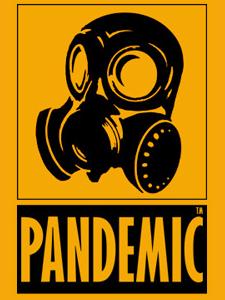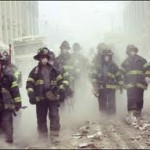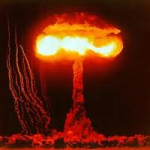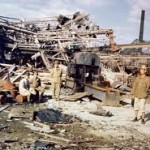Tag Archives: information
Doomsday 2012: If Not Zombies then….UFO’s, Planet X and Other Heavenly Bodies
 Doomsday 2012: If Not Zombies then….UFO’s, Planet X and Other Heavenly Bodies
Doomsday 2012: If Not Zombies then….UFO’s, Planet X and Other Heavenly Bodies
By Jim Donahue
After careful reflection and some prompting from certain individuals, I feel as though I have forgotten to mention some material in regards to what might happen on 12/21/2012. So for the moment, the next installment, Doomsday 2012: How to Prepare and Survive the Event, is on hold while I touch on some other perspective problems.
UFOs have been a hot topic of debate all over the world for eons. What with more than one airline pilot admitting to have seen a UFO, it would appear that they do in fact exist. In fact, in México City, UFO sightings are a daily happen stance. And there are other places around the globe where similar things occur.
The History Channel has a series Ancient Aliens attempts to deal with this phenomenon from a factual standpoint. It comes off as factual to some degree, but in the end, it’s just entertainment. One of the show’s most well-known contributors, Erich von Däniken, author of the book, Chariots of the Gods? Is accepted as gospel by true believers.
The background information for the series, posted on the channel’s website, says, “According to ancient alien theorists, extraterrestrials with superior knowledge of science and engineering landed on Earth thousands of years ago, sharing their expertise with early civilizations and forever changing the course of human history. Ancient alien theory grew out of the centuries-old idea that life exists on other planets. The space program played no small part in this as well: If mankind could travel to other planets, why couldn’t extraterrestrials visit Earth?
Most ancient alien theorists, including von Däniken, point to two types of evidence to support their ideas. The first is ancient religious texts in which humans witness and interact with gods or other heavenly beings who descend from the sky—sometimes in vehicles resembling spaceships—and possess spectacular powers. The second is physical specimens such as artwork depicting alien-like figures and ancient architectural marvels like Stonehenge and the pyramids of Egypt.
Alex Knapp of Forbes.com says, “I find it incredible and frightening that a worldwide distributed television channel that bills itself as ‘The History Channel’ can broadcast such rubbish as Ancient Aliens. If it were an entertainment program, I’d have fewer worries (although it would still make me cross); it is the implied authority of the channel (‘The History Channel,’ not just any old ‘History Channel’) that makes the broadcast of this series so potentially damaging as we saw in the reaction of the forum poster quoted above. A channel that is making claims for its authoritative status, which offers educational resources, has a responsibility not to mislead its viewers (no doubt its executives think of them as ‘customers’). That responsibility is one that all makers and broadcasters of supposedly factual television have, but one that few of them take seriously: the responsibility to check facts.”
Okay, now let’s talk about Planet X. Planet X, also known as Nibiru, is a mysterious object that orbits our sun every 3600 years. This object has a very significant connection to the Mayan calendar date of 2012. There is so much information about what is happening in our solar system that even the local news channels report that there are signs of planet X. Dr. Michio Kaku a renowned scientist claims that scientists like him had made a mistake. He made a statement saying that scientific data regarding the passing of Planet X passing through our solar system was off by a factor of 20. What this means is that scientists had previously misinterpreted the difference between a X class solar storm and the new catastrophic Y class solar storms detected in 2003 from hitting the Earth. This corrected data makes an immensely distinct difference between a survivable X class solar storm versus an incredibly strong Y class solar storm that would disrupt the world so harshly with the possible result of setting humanity back towards a third world economy across a global scale. This is a very real difference in data and a very real threat to mankind. And so it goes. We may have a near Earth object collide with our planet.
There is also increased interest in Earth’s moon. Some say it’s a landing base and operations center for aliens. Rumor has it that the American government has marked as classified a lot of information about findings on the Moon. In 1988, a prominent Chinese official, a member of the nation’s space program, unveiled pictures of human footprints on the lunar surface. The official stated that he had received the information from a reliable source and accused the Americans of concealing that information. The photos were dated from August 3, 1969 – two weeks after Armstrong and Aldrin stepped onto the surface of the Moon on July 20, 1969. Therefore, the materials of the lunar mission were studied and classified by NASA.
On March 15, 2009, The New York Times produced another sensation. The same Chinese official, Mao Kan, stated that he had obtained over than 1,000 secret NASA photographs depicting not only human footprints but also a human carcass on the surface of the Moon. Some of the bones in the carcass were missing, the official said. The human corpse must have been dropped on the Moon from an alien spaceship, but the extraterrestrials kept some tissue samples for research.
The photos were taken by a lunar probe. The absence of air makes it possible to capture minute details from the lunar orbit. The pictures of the carcass were very clear.
Dr. Ken Johnston, former manager of the Data and Photo Control Department at NASA’s Lunar Receiving Laboratory, said that US astronauts had found and photographed ancient ruins of artificial origin on the Moon. Supposedly, US astronauts had seen large unknown mechanisms on the Moon. This data was classified by the US government.
Some folks are true believers, and others are skeptical. Which are you?
PANDEMIC – Mystery illness in Cambodia solved, doctors say
 Phnom Penh, Cambodia (CNN) — The cause of a mysterious illness that has claimed the lives of more than 60 Cambodian children has been determined, medical doctors familiar with the investigation told CNN on Wednesday.
Phnom Penh, Cambodia (CNN) — The cause of a mysterious illness that has claimed the lives of more than 60 Cambodian children has been determined, medical doctors familiar with the investigation told CNN on Wednesday.
A combination of pathogens, disease-causing micro-organisms, is to blame for the illness, the World Health Organization, in conjunction with the Cambodian Ministry of Health, has concluded, the doctors said.
The pathogens include enterovirus 71, which is known to cause neurological disease; streptococcus suis, which can cause infections like bacterial meningitis in people who have close contact with pigs or with pork products; and dengue, which is transmitted by mosquitoes.
The inappropriate use of steroids, which can suppress the immune system, worsened the illness in a majority of the patients, the doctors said. The World Health Organization (WHO) is expected to advise health care workers to refrain from using steroids in patients with signs and symptoms of the infection, which include severe fever, encephalitis and breathing difficulties.
While not all the microorganisms were present in each patient, doctors concluded the illness was caused by a combination of them and worsened by steroid use.
The WHO sources did not want to be identified because the results of the health organization’s investigation have not yet been made public.
“I’m very confident for the reason of the epidemic,” said Dr. Phillipe Buchy, chief of virology at the Institut Pasteur in Cambodia and one of the doctors who cracked the case.
“The first thing that goes through your mind is, is this one of the usual suspects you haven’t detected before?” said Dr. Arnaud Tarantola, chief of epidemiology and public health at the Institut Pasteur. “If it is, has it mutated, or changed in a way that it causes more severe disease? Or is it something completely new?”
On the steroids issue, Tarantola said, “When you have a dying child, you try to use what you have at hand, and they were right to try that.” But, he acknowledged, “from the cases we reviewed, almost all of the children died, and almost all of them had steroids.”
Parents face anxious wait over mystery illness
“I think we can close the case and move ahead asking different questions,” Buchy said. “Not what is the illness, but now, how long has the virus been circulating? What is the extent of the circulation of the virus? How many mild diseases are we missing? That’s the next step.”
Over the past four months, doctors at Kantha Bopha Children’s Hospitals in Phnom Penh have been faced with the mysterious syndrome, which kills children so fast that nearly all of those infected with it die within a day or two of being admitted to the hospital.
Dr. Beat Richner, head of the children’s hospitals — which cared for 66 patients affected by the illness, 64 of whom died — said that no new cases of the illness had been confirmed since Saturday.
Other hospitals in the country have reported similar cases, but far fewer than the children’s hospitals in the capital, which are the most popular.
In the last hours of their life, the children experienced a “total destruction of the alveola(e) in the lungs,” Richner said. Alveolae are the air sacs where oxygen enters the bloodstream.
Most of the children who have contracted the illness have come from the south of the country, though health officials cannot find what is known as a cluster — a lot of cases coming from one specific area.
By June 29, the WHO had been contacted and Cambodian officials were scrambling to instruct health providers across the country to spread information about the illness as quickly as possible.
Officials search for clues in disease killing Cambodia’s children
The WHO and the Cambodian authorities’ announcement of the situation drew criticism from Richner, who said they were “causing unnecessary panic.”
The WHO said the unexplained nature of the outbreak obliged it to communicate the information.
Over the weekend, lab tests linked enterovirus 71 (EV71) to some of the cases. But the tests didn’t solve the whole puzzle and health officials continued their investigations, noting the detection of other elements like streptococcus suis and dengue.
The link to EV71 does not particularly help in the treatment of the illness, as there is no effective antiviral treatment for severe EV71 infections and no vaccine is available.
In milder cases, EV71 can cause coldlike symptoms, diarrhea and sores on the hands, feet and mouth, according to the journal Genetic Vaccines and Therapy. But more severe cases can cause fluid to accumulate on the brain, resulting in polio-like paralysis and death.
Outbreaks of the enterovirus “occur periodically in the Asia-Pacific region,” according to the CDC. Brunei had its first major outbreak in 2006. China had an outbreak in 2008.
Adults’ well-developed immune systems usually can fend off the virus, but children are vulnerable to it, according to the CDC.
“It looks like (EV71) has emerged strongly, probably because it hadn’t circulated with the same intensity in the past years,” Tarantola said.
Reported cases of streptococcus suis have risen significantly in recent years, notably in Southeast Asia, according to a paper that appeared last year in Emerging Infectious Diseases, a journal published by the Centers for Disease Control and Prevention in Atlanta.
The rainy season in Cambodia, which lasts from May to October, is a key problem in trying to control diseases like dengue. Because of a lack of indoor plumbing in many homes, people collect rainwater in vats, creating potential breeding grounds for mosquitoes.
In Cambodia, as with many places around the world, parents first try treating their child at home. If that doesn’t work, they typically then go to a local clinic. A hospital visit, which often involves a long trip, is a last resort.
DOOMSDAY 2012: A New Age or a New World Order?
I see two events as the most probable for this date. A terrorist attack, which will bring with it the Dawn of the New Age of Man, or perhaps the collapse of the world economy, which would bring about the New World Order spoken of since the time of Woodrow Wilson’s presidency.
A terrorist attack of some sort may occur on 12/21/2012 and is most likely the event that world leaders are trying their best to prevent. After the events of 9/11, nothing would surprise me. The architects of the events of 9/11, Al-Qaida, planned the event to be carried out on 9/11/2001 as the numbers 911 refer to the phone number we here in America and other places as well, use to report an emergency.  So if one or more terrorist organizations were to plan and try to execute an event on 12/21/2012, the supposed end of the world according to the Mayan calendar, it may not be as unexpected as one might think. Actually, the end of the Mayan calendar signifies the dawn of a New Age, not the end of the World as we know it.
So if one or more terrorist organizations were to plan and try to execute an event on 12/21/2012, the supposed end of the world according to the Mayan calendar, it may not be as unexpected as one might think. Actually, the end of the Mayan calendar signifies the dawn of a New Age, not the end of the World as we know it.
Terrorist groups the world over  have been trying to acquire nuclear weapons of any kind for some time now. We don’t know if they have succeeded in acquiring them, but I think if they did, our government would do something about it, and then that information would be made public, so all the World would know. And I’m not sure if that type of information would be disseminated to the general public, as it may have unintended consequences.
have been trying to acquire nuclear weapons of any kind for some time now. We don’t know if they have succeeded in acquiring them, but I think if they did, our government would do something about it, and then that information would be made public, so all the World would know. And I’m not sure if that type of information would be disseminated to the general public, as it may have unintended consequences. Panic and hysteria may ensue, and this may be the reaction that those involved are after.
Panic and hysteria may ensue, and this may be the reaction that those involved are after.
So if someone or some group of people manages to create a disastrous event on this date, just how crippling to our world this event will be should be examined.
A concerted effort by radical terrorist groups Worldwide to act in unison on this date would be devastating. Mass bombings of buildings and infrastructure around the globe would be extremely debilitating. The worst case scenario in my opinion would be the detonation a nuclear device, or even multiple devices, on a global level. This would spell doom for the entire Planet.
in unison on this date would be devastating. Mass bombings of buildings and infrastructure around the globe would be extremely debilitating. The worst case scenario in my opinion would be the detonation a nuclear device, or even multiple devices, on a global level. This would spell doom for the entire Planet.
Iran has been actively producing nuclear material for some time now, according to them, for peaceful purposes, i.e. nuclear power generation. But many in the International community, the United States included, think that they are trying to create a nuclear weapon. They have been hell bent on the destruction of Israel for decades, and this scenario on this date would create Armageddon. This definitely would bring about the Dawn of the New Age of Man. And it is a distinct possibility.
United States included, think that they are trying to create a nuclear weapon. They have been hell bent on the destruction of Israel for decades, and this scenario on this date would create Armageddon. This definitely would bring about the Dawn of the New Age of Man. And it is a distinct possibility.
Now let us talk about the other possibility referred to herein, the New World Order.
The term was first used during Woodrow Wilson’s presidency, in reference to his creation of the League of Nations, a precursor to the United Nations, following the devastation of World War I. The term was used sparingly at the end of World War II when describing plans for the creation of the United Nations, in part because of the negative association to the failed League of Nations.
precursor to the United Nations, following the devastation of World War I. The term was used sparingly at the end of World War II when describing plans for the creation of the United Nations, in part because of the negative association to the failed League of Nations.
The most widely acknowledged use of the term in modern times was by President George H. W. Bush of the United States and President Mikhail Gorbachev of the Soviet Union to define the post-Cold War era.
The New World Order, and its possible enactment, has been deemed a conspiracy by several different groups of people to, in essence, start over, and Capitalists have been accused of leading the charge.
You see money, in my opinion, is a finite resource, and there is only so much of it to go around. Many will disagree with this statement, and it is only my opinion, not necessarily a fact. Be that as it may, Capitalists, since the dawn of time, want to make ungodly profits on their investments, for a multitude of reasons. One only has to look at Exxon/Mobil for an example. Our planet is in the midst of a global recession, and their profits are in the hundreds of billions. Ungodly indeed.
Have you ever wondered why our government appears to prop up some third world countries? That’s because one or more American businessmen probably has a factory there, and it’s there because the wages paid to the work force in these countries are a tenth or less than the wages in the US. That makes it cheaper to manufacture and ship a product to the US than to manufacture it here because of our prevailing wages. And it allows the Capitalists the opportunity to make ungodly profits.
So here’s the conspiracy scenario. On December 21st, 2012, a disaster on a global scale befalls the planet. Whether it is a natural disaster or an intentional event created by some group of people with ulterior motives is yet to be determined. In short order, the world economy crashes, and transportation of goods stops. No ships to bring goods to America. The food supply will also be interrupted.
Then at some point in time, the government announces that US dollars are no longer a valid currency and USA bucks, or some similarly named item, will replace them. At ten cents on the dollar. So the $10,000.00 US dollars in your savings account will only be worth $1,000.00 USA bucks. The majority of the population in the US will exchange their US dollars for USA bucks because that’s all they can do. Black market buying of USD will begin as independent entrepreneurs realize what is happening and try to get in on the scam.
and USA bucks, or some similarly named item, will replace them. At ten cents on the dollar. So the $10,000.00 US dollars in your savings account will only be worth $1,000.00 USA bucks. The majority of the population in the US will exchange their US dollars for USA bucks because that’s all they can do. Black market buying of USD will begin as independent entrepreneurs realize what is happening and try to get in on the scam.
Capitalists and the wealthy will not exchange their US dollars because they already know the scam. Then when all the available US dollars are accounted for and replaced by USA bucks, then and only then will our government announce that we are returning to the US dollar as our only form of currency, and everyone will have to re-exchange their USA bucks for US dollars. Except for the rich and wealthy, who were in on the scam from the beginning and never exchanged their money in the first place. They will have prepared for the event by stockpiling food and water and anything else they would need to last them for five years or longer. And now their US dollars are worth ten times more than before.
US dollars are accounted for and replaced by USA bucks, then and only then will our government announce that we are returning to the US dollar as our only form of currency, and everyone will have to re-exchange their USA bucks for US dollars. Except for the rich and wealthy, who were in on the scam from the beginning and never exchanged their money in the first place. They will have prepared for the event by stockpiling food and water and anything else they would need to last them for five years or longer. And now their US dollars are worth ten times more than before.
And the rich get richer. And let us not forget, your wages will only be worth 10 cents on the dollar as a 9 dollar per hour minimum wage is now only 90 cents per hour. Similar to the wages in those third world countries. And everything starts over. And thus begins the New World Order. Or is it the New Age of Man? Hang on a minute, let me look at my scorecard.
I know it sounds crazy, but it could happen, couldn’t it?
Maybe. Maybe not. Anyway, let’s hope not.
Surviving the event begins next week, I promise.
Doomsday Prep Survival Plans – Get A Ghillie Suit
San Fransisco, CA — (SBWIRE) — 06/25/2012 — Consumers interested in doomsday  preparation are seeking the tools, camouflage clothing and information necessary to arm themselves with an effective survival plan for a zombie apocalypse or end-of-days events. The right survival plan will include all of the items and details necessary to keep family and friend’s safe regardless of what may happen in the months and years to come.
preparation are seeking the tools, camouflage clothing and information necessary to arm themselves with an effective survival plan for a zombie apocalypse or end-of-days events. The right survival plan will include all of the items and details necessary to keep family and friend’s safe regardless of what may happen in the months and years to come.
GhillieSuitClothing.com is gaining attention as a source for extensive editorial content and a large collection of good quality ghillie suits, camouflage clothing enabling customers to go undercover, blending into nature, while maintaining the flexibility and comfort to move around.
Made from natural jute twine, burlap or synthetic thread, ghillie suits are designed to break up the human outline and resemble heavy foliage. GhillieSuitClothing.com features a wide-range of good quality ghillie suits, from the bushrag or warrior ghillie suit to the woodland jackal and zombie hunter ghillie suit.
The suits and camouflage clothing are organized into convenient categories on the left side-bar of each page on the site, so shoppers can find exactly what they need to meet their needs. Customers can go to the Popular Brands section on the side-bar to browse products from brand names, including GhillieSuits, Chameleon, CamoSystems and more. If they already know exactly what they need, shoppers can use the site’s search engine tool in the header.
Extensive editorial content throughout GhillieSuitClothing.com enables visitors to learn more about how to select the right ghillie suit and camouflage clothing items as well as how people are using these products for simulation sports, Halloween, undercover surveillance, hunting and in the military.
GhillieSuitClothing.com was designed to meet a previously unmet need for good quality ghillie suits, according to the site owner, “I was shocked to see the lack of information about commercial ghillie suits available so I started Ghillie Suit Clothing in 2007. Ghillie Suit Clothing was opened because I was frustrated when I was shopping for a ghillie suit. How was I supposed to make a decision based on one picture of a product or a vague description?”
“As the store owner, my goal was to create a store that presented its products with as much detailed and accurate information as possible. I am hoping that by doing so, consumers can make an informed purchase decision based on the correct information.”
Consumers can choose a product item to see high quality images as well detailed specifications and editorial content to provide customers with the knowledge they need to make an informed choice. The website’s blog is available in the header and provides additional high quality editorial content and customer photos.
Visitors to the site can sign-up for an account through the link in the header to create wish lists and proceed with making a purchase. GhillieSuitClothing.com provides exceptional customer service and will walk customers through the process to identify the right ghillie suits and camouflage clothing to meet their specific purposes.
About GhillieSuitClothing.com
GhillieSuitClothing.com has provided good quality ghillie suits and camouflage clothing since 2007. With a wide-range of product items, including the warrior ghillie suit, ghost ghillie suit, and ghillie suits for kids, the website assists customers through the process of finding all of the items they need for their doomsday survival plans. High quality images, in-depth editorial content, and user-friendly website navigation, make the site the preferred choice for consumers. For more information, visit http://www.ghilliesuitclothing.com




